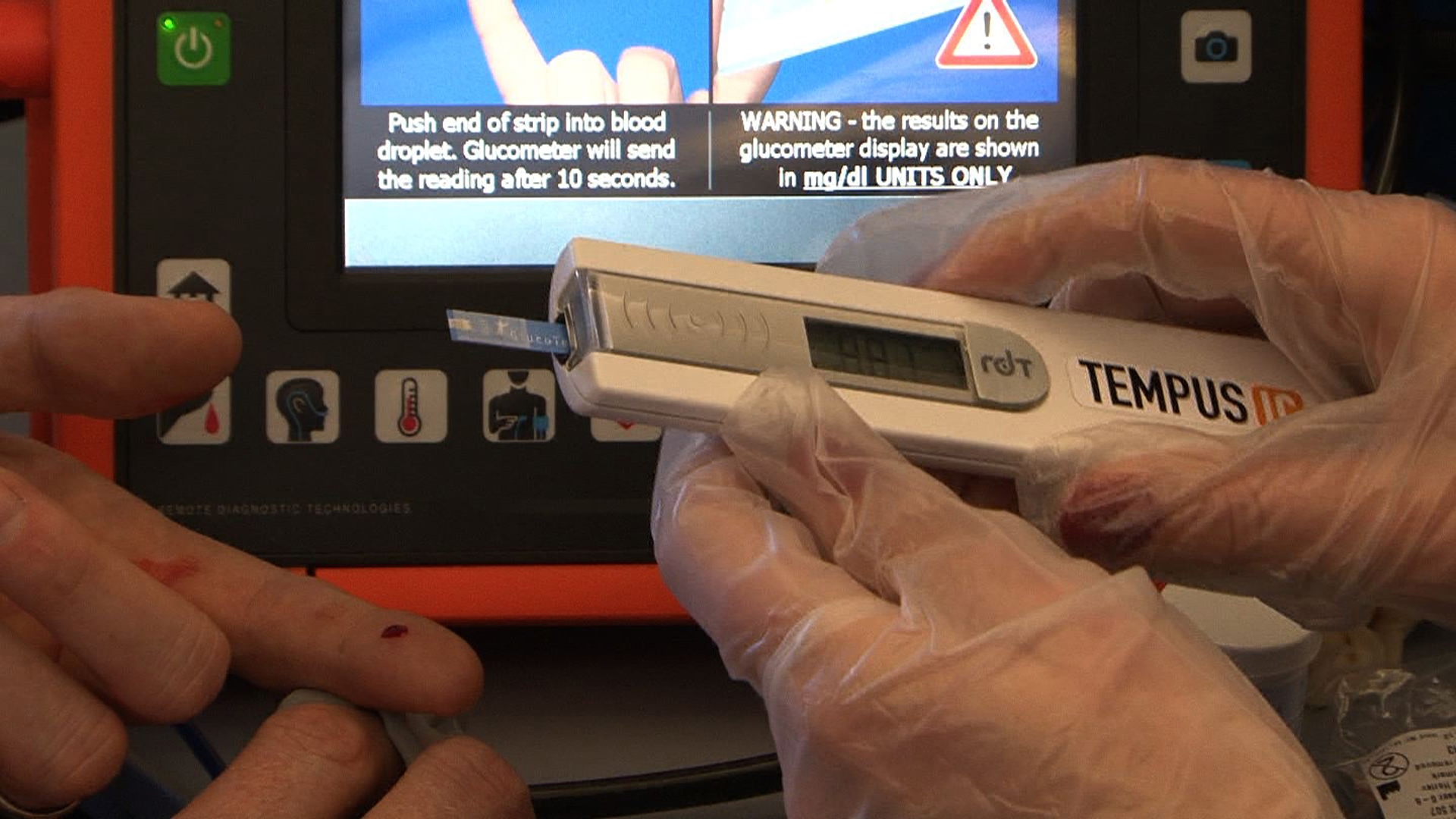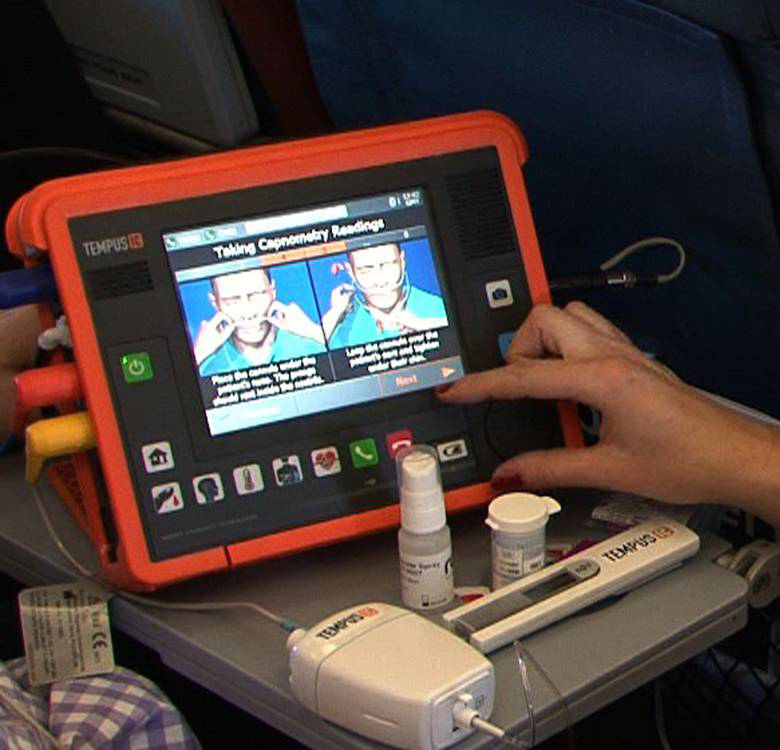
Three years of collaborative activity between ESA and RDT, aimed at identifying suitable solutions to the provision of sustainable satellite-enabled telemedicine services for the commercial aviation market, is demonstrating commercial success with the recent announcement by Etihad Airways of its decision to install new state-of-the-art technology Tempus IC onboard health monitoring system on its long-haul and ultra long-haul aircraft.
Tempus IC can monitor the condition of passengers who display signs of illness in-flight that might require immediate medical attention. It is designed to enable non-medical users, such as cabin crew, to gather vital information about a passenger's health quickly and efficiently, by monitoring and transmitting to a ground-based response centre vital signs routinely measured in an Emergency Room - including blood pressure, temperature, glucometry and 12-lead electrocardiogram.  The crew will be able to simultaneously talk to and send clinical-quality data along with still pictures and moving video to a ground-based medical team of experts specialised in assisting in-flight medical contingencies for diagnosis and support.
The crew will be able to simultaneously talk to and send clinical-quality data along with still pictures and moving video to a ground-based medical team of experts specialised in assisting in-flight medical contingencies for diagnosis and support.
Pierluigi Mancini, ESA, Head of the Awareness Activities and Feasibility Studies Division of the Integrated Applications Promotion (IAP) programme adds: "The objective of the activity was to develop and validate a system that enables airlines to manage in-flight medical emergencies more effectively and to reduce the number of costly unnecessary medical diversions. With the emergence of ultra long-haul aircraft such as the A380, this kind of technology is really the only way forward to contain the component of risk that an in-flight medical incident presents, not just for the airline but for the passenger as well. The combination of medical data with the ability to actually see and talk to a patient and crew is a real breakthrough".
Graham Murphy, CEO of RDT, the company that designed and manufactures the ground-breaking medical device, comments, "With the rise of larger aircraft and lower air-fares, the number of people of all ages travelling by air is increasing.  As a result, the probability of a medical emergency occurring in-flight has risen and the pilot will often divert the flight to the nearest airport where medical attention can be provided. Commercial airlines are interested in telemedicine technology as a tool to improve medical provision for customers as well as to support their staff and crew. In simple terms, better diagnosis that enables a diversion to be avoided is of direct benefit to the airline and its passengers".
As a result, the probability of a medical emergency occurring in-flight has risen and the pilot will often divert the flight to the nearest airport where medical attention can be provided. Commercial airlines are interested in telemedicine technology as a tool to improve medical provision for customers as well as to support their staff and crew. In simple terms, better diagnosis that enables a diversion to be avoided is of direct benefit to the airline and its passengers".
Mancini continues "ESA has been active in the field of satellite-delivered telemedicine for a number of years and this development addresses the use of telemedicine in support of the management of medical emergencies onboard commercial airlines. By investing in new applications ESA acts as a catalyst for European industry to develop and exploit innovative services and markets while, at the same time, fostering and organizing user demand to gain the critical mass necessary to sustain those services. We are extremely pleased with the sustainable service resulting from this project and look forward to further developments".


